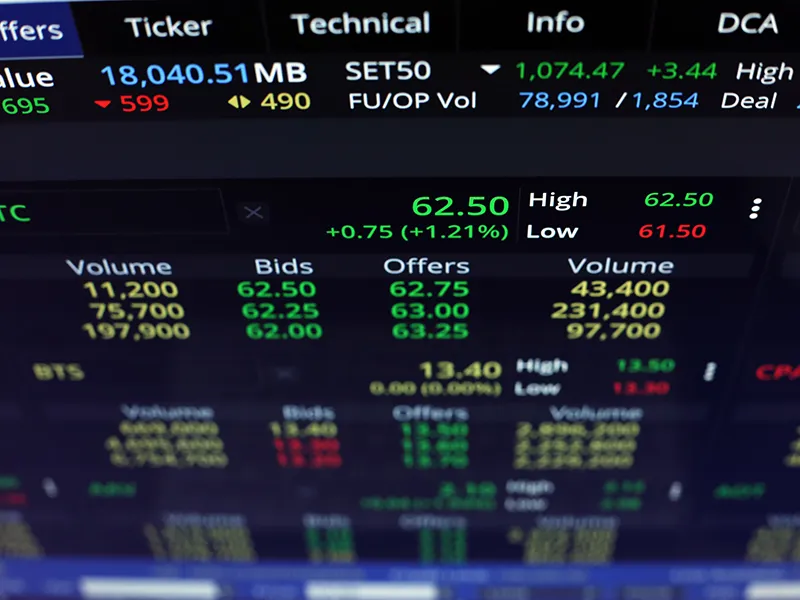
R Squared, popularly known as coefficient of determination, is a measurement used in a regression model to estimate the proportion of variance for a dependent variable from the independent variable. Regression models are commonly used statistical methods in the fields of finance and other disciplines. These help in determining the strength and nature of the relationship between two variables.
While correlation in a regression model tells us about the strength of the relationship between a dependent and independent variable, R-Squared tells us about the extent to which the variance of one variable will impact the variance of the second variable. This is used for evaluating stocks and mutual funds.
How to Calculate R Squared?
R Squared is calculated as:
R2 = 1− (Unexplained Variation/ Total Variation)
The steps to be followed for arriving at the components of this calculation are:
- In order to get to the line of best fit, we must use the regression model, under which the data points of dependent and independent variables have to be considered.
- Once the predicted values are estimated, the actual values have to be subtracted and the results should be squared.
- This results in a list of errors squared.
- It is then summed to be equal to the unexplained variance.
- To know the total variance, we must reduce the average actual value from the individual actual values.
- The results have to be squared and added.
- The first sum of errors, which is also the explained variance, must be divided by the total variance sum. This gives us the R squared.
How is R Squared used in investments?
In the investment world, R squared is represented as a percentage of a mutual fund or stock movements in conjunction with its benchmark.
For example, an R Squared of 100% for an index fund means that the movement of the stock or fund is entirely in line with or in the same direction as the index. Funds or investments that have a low R Squared (70% or lower) indicate that the fund or security is not in sync with the index movements.
How does R Squared work?
From a mutual fund investment perspective:
- R-Squared result offers insight into the proportion of a fund’s movements that can be explained based on the movements in its benchmark index
- Higher the R-squared, the more closely related the fund’s performance with the index performance
- Lower R-Squared means the fund doesn’t necessarily behave like its benchmark index
- The higher the R-squared, the more critical the beta of the investment will be
- R-Squared that range around zero indicate no performance correlation between an investment and the market benchmark.
- R-Squared near 100 means that an investment has a high correlation with an index.
Therefore, investors may notice that index-tracking funds tend to have R-Squared exactly at 100 or somewhere near it. On the other hand, a fund performance that moves widely away from its index will reflect a very low R-Squared number.
Factors to note while using R-Squared
Investors must bear in mind that R-Squared comes with its own limitations.
- R-Squared calculations are based on historical returns. Therefore, its ability to fetch accurate predictions is not guaranteed.
- R-Squared of one investment won’t tell an investor how it will behave against other related investments or mutual funds within the portfolio.
Before understanding the difference between Beta and R-Squared, let us understand the concept of Beta.
What is Beta?
Beta is a measurement that helps determine a stock price’s responsiveness to overall stock market changes. While comparing the performance of the benchmark index like the NSE Nifty to a chosen stock’s returns, there is a pattern that can be observed showing the stock’s openness towards the market risk. Reading this can help investors in deciding whether to opt for a riskier stock that may be highly correlated with the market (having a beta above 1), or opt for a less volatile stock that has a beta below 1.
Most market experts suggest reading the Beta and R-Squared together rather than individually. Here are the reasons why reading them together can be beneficial in investment decision-making:
- R-Squared considers every price change of an asset and how it closely corresponds to a benchmark. Beta, however, focuses on how big the price change is in relation to the benchmark.
- When both these are used together, they provide investors a holistic view of the asset’s performance. By using the two together, investors can understand the investment and its correlation with the index to create a robust investment portfolio and make sound investment decisions.
Conclusion
While R squared is a very useful technical analysis tool while measuring a fund or stock performance, it requires some degree of expertise due to its statistical nature. In order to ensure thorough usage of R squared, investors must ideally calculate it for each of the fund or stock in their portfolio to know the overall portfolio performance. Also important is the usage of Beta in conjunction with R squared.
FAQs
Some of the commonly used risk measurement tools for investment decisions are Beta, R squared, Sharpe ratio, Alpha, Standard deviation, and Sortino ratio.
Alpha measures a fund manager’s performance in aligning the fund’s returns to the benchmark. A negative alpha means underperformance, and a positive alpha means good performance on the manager’s part.
Adjusted R squared modifies the R squared measurement to include additional independent variables for enhancing the calculation.
R-Squared values can be divided into three levels, 1-40% indicating low correlation to the benchmark, 40-70% indicating average correlation and 70-100% indicating high correlation.
Standard deviation is used for learning about the volatility of mutual fund schemes. It estimates the dispersion of data away from the mean. The more the dispersion, the higher the difference between fund performance and the benchmark. This tells investors how much the fund’s returns are deviating from the expected returns as per its historical performance.


























